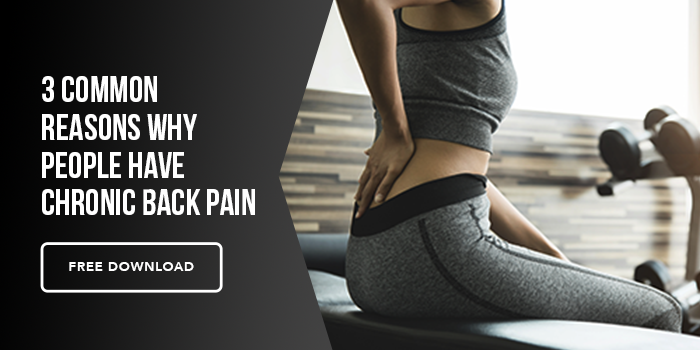To put it plainly, pain sucks. It’s one of the most uncomfortable physical feelings you can experience; and at some point in your life, you will experience it. Some people will even experience the worst type of pain, the kind that is chronic. Chronic pain is with you daily, and it can affect some people for so long that it simply becomes a part of their life.
The most value I have ever brought to a client’s life with my personal training was when I was able to solve their chronic pain. Sure, it was pretty amazing helping people lose 30lbs or add 50lbs to their favorite lift, but nothing comes close to the times I could help clients eliminate chronic pain. Life changing doesn’t even come close to describing the shift they experience. If I had a client who came to me with chronic pain (most clients) and I was able to help eliminate their pain, I knew I had a client for life. This was actually part of the reason I was so successful as a personal trainer. By the time I made the switch from personal training to helping run Mind Pump Media full-time, my average client had been with me for at least 6 years. Some of them had worked with me for 12 years consistently, and a large part of this was my expertise in correctional exercise, which usually resulted in massive reductions or eliminations in chronic pain.
Of all of the common types of chronic pain that people suffer, low back pain is easily the most common. It’s estimated that up to 80% of Americans will suffer from chronic back pain at some point in their lives. 20% of them will suffer from chronic back pain that never goes away. This is crazy. As a trainer, I was able to help alleviate low back pain in almost every single client I ever trained. Heck, my producer Doug originally hired me as his trainer with the sole intent of helping him with his back pain. Less than a year into Doug’s training, he was able to deadlift (a very back intensive barbell lift) over twice his body weight.
I am not saying I have all the answers when it comes to back pain, but based on my experience, if back pain is not from a recent acute injury, it’s almost always due to poor movement and muscle recruitment patterns, weak muscles, tight muscles or all of the above. Although everyone is unique, I did see some common patterns among the hundreds of clients I worked with. More often than not, chronic low back pain could be greatly alleviated by focusing on a few key things.
Improve hip Mobility
What do the hips have to do with chronic low back pain? A whole lot. Remember this: EVERYTHING in your body is connected. If you wore a 2-inch rise in just one of your shoes for a few days, you would realize just how connected things are. Your knee, hip, back and even your neck would all start to hurt. This is due to the fact that the muscles and joints of the body depend on one another. If one joint or muscle fails to function optimally, other parts of the body have to compensate. Your body is always trying to move in the most efficient way possible, and if your hips lack mobility, the first place that compensates are the joints and muscles of the low back. This will happen with every single step you take. A short 10-minute daily practice of hip movements will work wonders for your hip mobility and, subsequently, your low back. My favorite hip mobility movement is the 90/90 and its variations. Here is a video with Adam demonstrating.
Improve core stability
If you were to take a human spine and separate it from all of its supportive muscles, you would see that it would have zero stability. If you stood a spine on its end, it would just fold in whichever direction was the easiest. Your spine is made up of many joints, and they NEED the muscles around them to keep them in ideal alignment. If some muscles are too weak then stability is comprised. Your transverse abdominal muscle (TVA) is like your body’s natural weight belt or corset. When its strong, it stabilizes ALL AROUND your lower spine. This muscle is also often times weak in people. Doing some daily short TVA strengthening exercises will work wonders for this integral low back supporting muscles. My favorite TVA exercise is known as a vacuum. In this video I demonstrate.
Develop a better abdominal to hip flexor relationship
Your hip flexors and your abs have a synergistic relationship. They need each other in order to function optimally, and if the balance is off you will usually experience pain. Most people have hip flexors that are far more dominant than they should be. This is due to sitting in chairs for long periods of time, and it’s from a lack of activity. Both the hip flexors and the abs bend the body forward with one major difference. The hip flexors bend you forward at the hips while the abs bend you forward at the low back. If your abs aren’t doing what they are supposed to then your hip flexors will take over. Here is the problem: an overworked muscle tends to get injured easily or is often inflamed. Want to guess where the hip flexors anchor at? You guessed it, the low back. If your hip flexors are doing more than they should because you have weak or passive abs, you will feel it in your low back. Simply working your abs isn’t enough though. Since your hip flexors are dominant, and since the action of the hip flexors is so similar to the abs, just doing a bunch of ab exercises will not only NOT help, it may actually make things worse. Does your low back hurt after you work your abs? Blame your hip flexors. One exercise that can really help this issue is a crunch WHILE “deactivating” the hip flexors. This teaches your abs to fire more reliably and consistently so that your hip flexors get a break. Doing hip flexor deactivator crunches just a few times a week for 10-15 minutes can make a huge difference in many people with chronic back pain. In this video I demonstrate.






